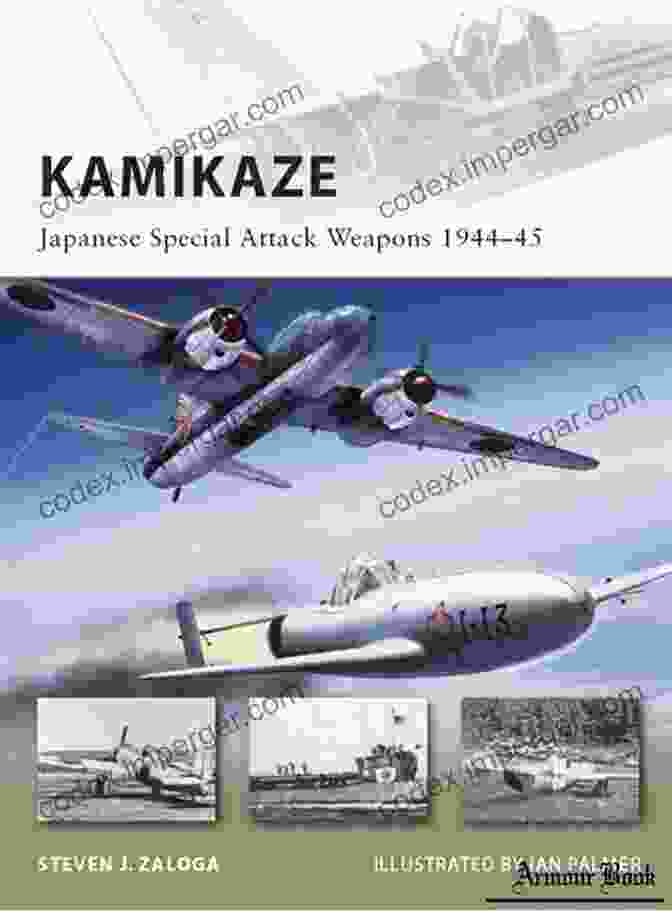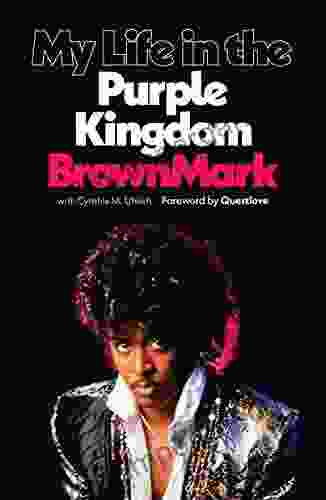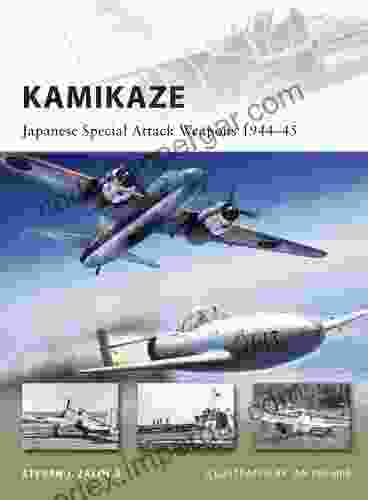Kamikaze: The Desperate Suicide Weapon of the Imperial Japanese Navy


As the tide of World War II turned against Japan in 1944, the Imperial Japanese Navy (IJN) faced a desperate situation. Facing overwhelming Allied air and naval superiority, the IJN turned to a new and deadly tactic: the kamikaze.
4.4 out of 5
| Language | : | English |
| File size | : | 8294 KB |
| Text-to-Speech | : | Enabled |
| Screen Reader | : | Supported |
| Enhanced typesetting | : | Enabled |
| Word Wise | : | Enabled |
| Print length | : | 88 pages |
Kamikaze, meaning "divine wind," were suicide attacks carried out by Japanese pilots who flew their aircraft into Allied ships. These attacks were designed to inflict maximum damage on the enemy, even at the cost of the pilot's life.
Origins of the Kamikaze
The origins of the kamikaze can be traced back to the early days of the war. In 1943, the IJN began experimenting with using torpedo planes to carry out suicide attacks against Allied shipping. However, these early attempts were largely unsuccessful.
In October 1944, the IJN formed the Kamikaze Special Attack Corps, which was responsible for training and deploying kamikaze pilots. The first kamikaze attack was carried out on October 25, 1944, when a group of Japanese pilots attacked a U.S. Navy task force off the coast of the Philippines.
The Kamikaze Pilots
The kamikaze pilots were typically young men in their early twenties. They were volunteers who were motivated by a sense of duty to their country and a desire to avenge the deaths of their comrades.
Kamikaze pilots underwent a rigorous training program that lasted for several weeks. They were taught how to fly their aircraft, how to use their weapons, and how to carry out suicide attacks.
The Kamikaze Attacks
Kamikaze attacks were typically carried out in groups of three or four aircraft. The pilots would fly their aircraft at low altitude until they reached their target. They would then pull up into a steep dive and crash into the ship, detonating their bombs.
Kamikaze attacks were devastatingly effective. They sank or damaged over 350 Allied ships, including several aircraft carriers and battleships. However, the kamikaze also came at a high cost. Over 4,000 Japanese pilots died in kamikaze attacks.
The Impact of the Kamikaze
The kamikaze had a significant impact on the course of the war. They forced the Allies to adopt new defensive tactics and they helped to prolong the war by several months. However, the kamikaze also had a negative impact on the Japanese people. They led to the deaths of thousands of young men and they further demoralized the Japanese population.
The kamikaze were a desperate measure that was used by the IJN in an attempt to stave off defeat. They were a testament to the fanatical dedication of the Japanese people and they had a significant impact on the course of the war. However, the kamikaze also came at a high cost and they ultimately failed to achieve their objectives.
Further Reading
* Kamikaze: Japanese Special Attack Weapons 1944 45 by Anthony Tully * The Kamikaze: Myths and Realities by Masatake Okumiya * Zero Hour: The Last Days of the Japanese Empire by Ian Toll
4.4 out of 5
| Language | : | English |
| File size | : | 8294 KB |
| Text-to-Speech | : | Enabled |
| Screen Reader | : | Supported |
| Enhanced typesetting | : | Enabled |
| Word Wise | : | Enabled |
| Print length | : | 88 pages |
Do you want to contribute by writing guest posts on this blog?
Please contact us and send us a resume of previous articles that you have written.
 Book
Book Novel
Novel Page
Page Chapter
Chapter Text
Text Story
Story Genre
Genre Reader
Reader Library
Library Paperback
Paperback E-book
E-book Magazine
Magazine Newspaper
Newspaper Paragraph
Paragraph Sentence
Sentence Bookmark
Bookmark Shelf
Shelf Glossary
Glossary Bibliography
Bibliography Foreword
Foreword Preface
Preface Synopsis
Synopsis Annotation
Annotation Footnote
Footnote Manuscript
Manuscript Scroll
Scroll Codex
Codex Tome
Tome Bestseller
Bestseller Classics
Classics Library card
Library card Narrative
Narrative Biography
Biography Autobiography
Autobiography Memoir
Memoir Reference
Reference Encyclopedia
Encyclopedia John Thackara
John Thackara Unathi Kapa
Unathi Kapa Robert Dwyer
Robert Dwyer Bruce Cameron Reed
Bruce Cameron Reed Brett Mckay
Brett Mckay Brian K Wheeler
Brian K Wheeler Bruce Hennigan
Bruce Hennigan Bruno Vilette
Bruno Vilette Brent M Jones
Brent M Jones Laura Childs
Laura Childs C J English
C J English Bryan Cranston
Bryan Cranston Dean Nimmer
Dean Nimmer Brenda Krause Eheart
Brenda Krause Eheart Bob Gardner
Bob Gardner Brian Levite
Brian Levite C Lynn Williams
C Lynn Williams Anura Guruge
Anura Guruge Brian D Lepard
Brian D Lepard Phoebe Goodell Judson
Phoebe Goodell Judson
Light bulbAdvertise smarter! Our strategic ad space ensures maximum exposure. Reserve your spot today!

 Angelo WardMy Life in the Purple Kingdom: A Tapestry of Creative Revelations, Spiritual...
Angelo WardMy Life in the Purple Kingdom: A Tapestry of Creative Revelations, Spiritual... Edward BellThe Silicon Valley Way, Second Edition: Unleashing Innovation and Achieving...
Edward BellThe Silicon Valley Way, Second Edition: Unleashing Innovation and Achieving...
 Jamison CoxAir Operations 1958 Lebanon and Taiwan: A Historical Account of Triumph and...
Jamison CoxAir Operations 1958 Lebanon and Taiwan: A Historical Account of Triumph and... Jonathan FranzenFollow ·19.8k
Jonathan FranzenFollow ·19.8k Henry JamesFollow ·9.6k
Henry JamesFollow ·9.6k Branson CarterFollow ·11.6k
Branson CarterFollow ·11.6k Hector BlairFollow ·14k
Hector BlairFollow ·14k Houston PowellFollow ·9.1k
Houston PowellFollow ·9.1k Harry CookFollow ·16.9k
Harry CookFollow ·16.9k Oscar WildeFollow ·2k
Oscar WildeFollow ·2k Glenn HayesFollow ·11.5k
Glenn HayesFollow ·11.5k

 Gary Cox
Gary CoxUnlocking Meaning and Purpose in Life: An Exploration of...
In an increasingly...

 Eric Hayes
Eric HayesMemoirs of the Early Pioneer Settlers of Ohio Illustrated
A Window into the Lives of Courageous...

 J.R.R. Tolkien
J.R.R. TolkienThe Montgomerys and Their Descendants: A Saga of Courage,...
Prepare to be...

 Avery Simmons
Avery SimmonsThe Rifle Musket: The Dawn of Modern Infantry Warfare
: The rifle musket, a revolutionary...

 Jesse Bell
Jesse BellUnlock the Power of Excel with VBA and Macros: A...
Microsoft Excel is a powerful spreadsheet...
4.4 out of 5
| Language | : | English |
| File size | : | 8294 KB |
| Text-to-Speech | : | Enabled |
| Screen Reader | : | Supported |
| Enhanced typesetting | : | Enabled |
| Word Wise | : | Enabled |
| Print length | : | 88 pages |








